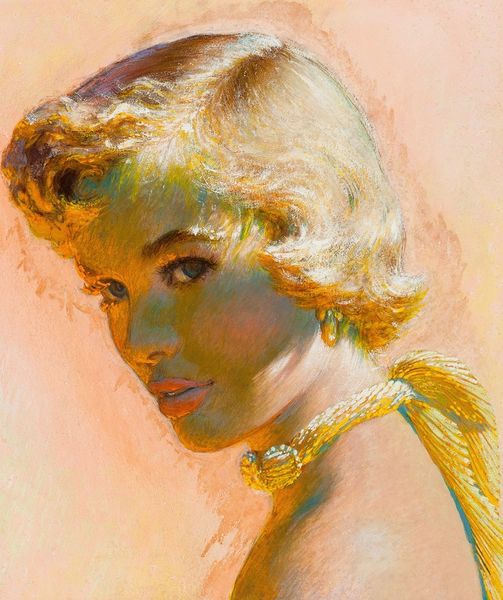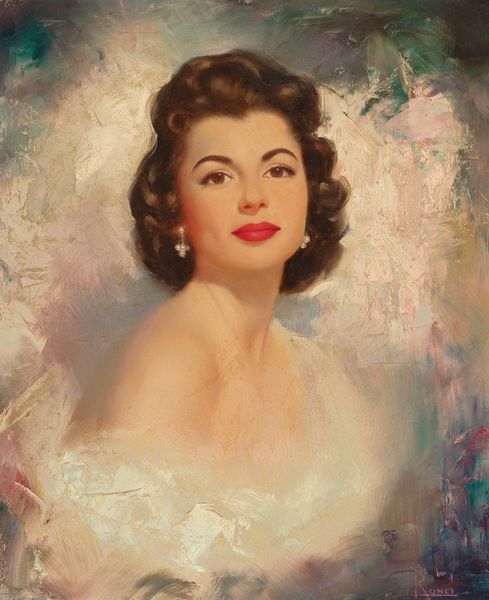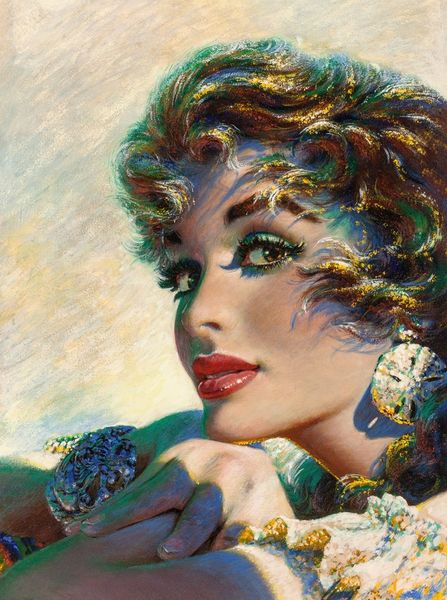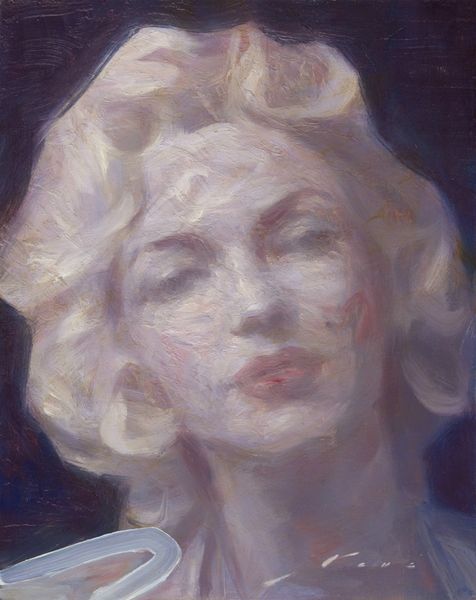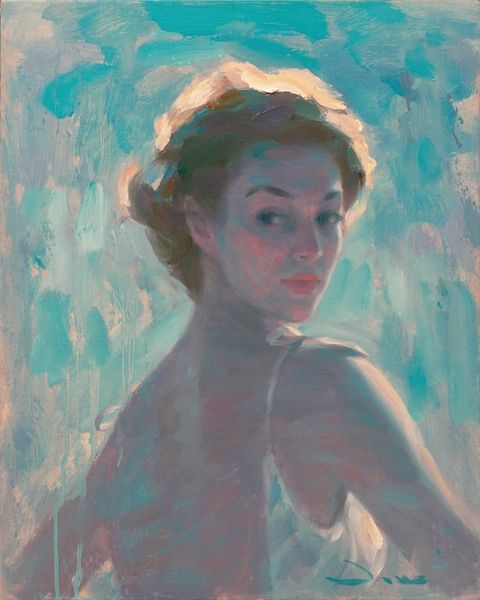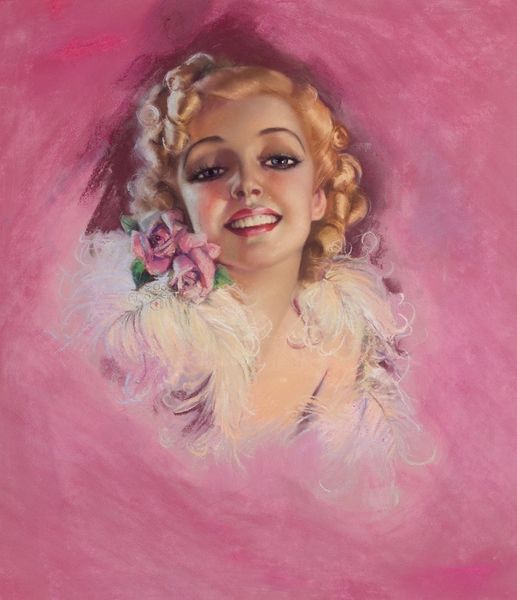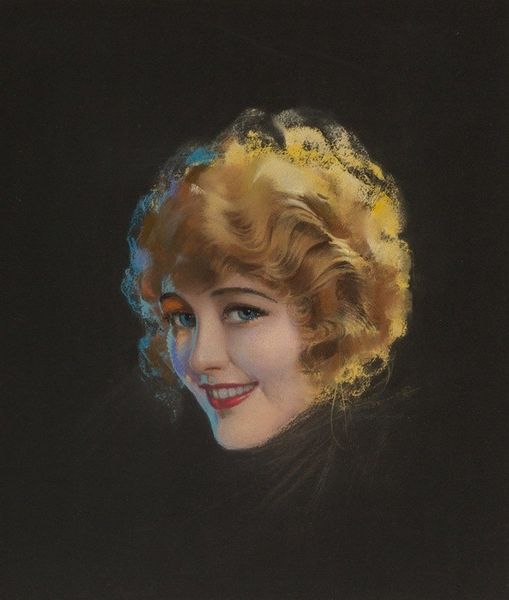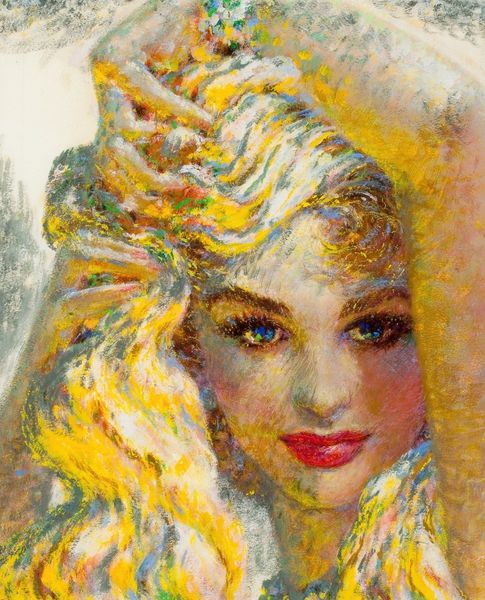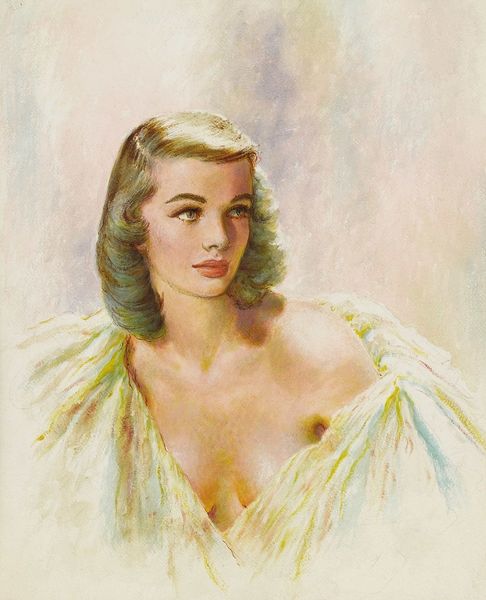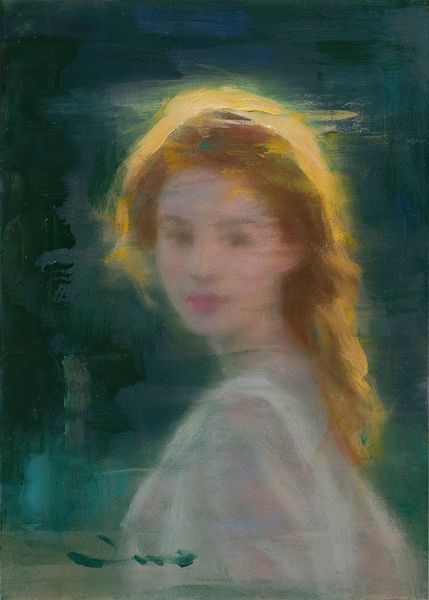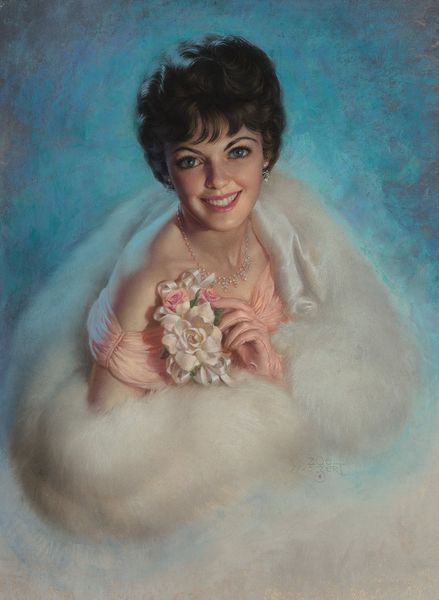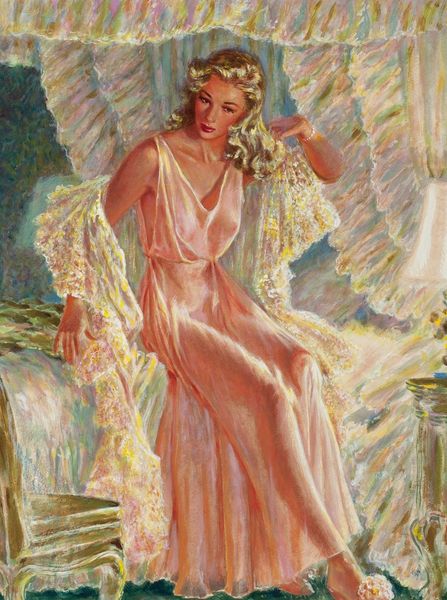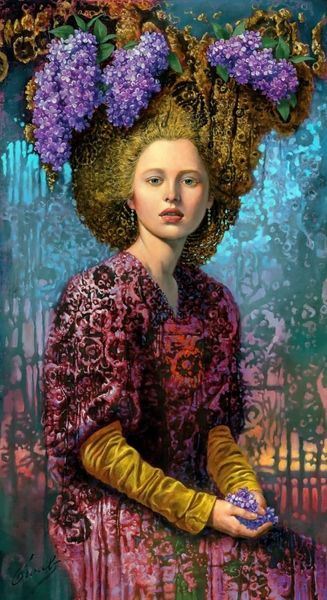
painting, acrylic-paint, impasto
#
portrait
#
figurative
#
painting
#
acrylic-paint
#
figuration
#
impasto
#
romanticism
#
portrait drawing
#
academic-art
#
portrait art
Copyright: Modern Artists: Artvee
Curator: Edwin Georgi painted this piece, simply titled *Portrait of a Lady*. While we don't have the exact date for it, it's an acrylic on what appears to be canvas, and demonstrates Georgi's style well. Editor: Wow, she kind of shimmers, doesn't she? Like she’s bathed in a soft light, all glowy and a little unreal. There’s a dreaminess about it. Curator: The portrait is indeed very evocative. Looking at her, I think about the romanticism of the idealized female form that characterized much of the 20th century's portrayals of women—specifically how the composition here feels both classically posed but also slightly distant. What might her gaze suggest about the construction of identity within painting traditions, you think? Editor: Good point. There’s something in the eyes— a kind of knowing that suggests both vulnerability and maybe a little mischief, you know? The light plays on that duality. Plus, that little smirk…is it genuine, or a practiced expression? That makes you wonder, who is this person and what kind of performance she plays? The light creates a halo of light surrounding her which emphasizes the idea of the portrait, idealized. Curator: Exactly! The jewelry – that delicate necklace, the simple earrings – positions her within certain socioeconomic structures too, adding another layer to her identity as an individual vs a representation. Acrylics lends to a romantic impasto that provides the entire picture with a luminous halo that is interesting and gives dimension to the whole surface of the artwork. It’s this contrast that feels distinctly Georgi’s, straddling the real and constructed. Editor: Totally! And because she's nameless, because we only know that the title is *Portrait of a Lady*, her personality or her gaze remains ambiguous: in a way, the lady transcends time; therefore, she has always been a contemporary lady because there is no name, or historical referent that might place her in time, space, society. This absence of historic contextualization of her individual gaze makes her modern. What remains contemporary? This face of hers! Curator: Yes, and through this painting, it compels us to really reconsider who is and was entitled to representation. What sort of images will endure and shape collective cultural imaginaries for future audiences? I think *Portrait of a Lady* provides valuable starting points for considering these complex and ongoing negotiations. Editor: I agree. Beyond the historical lens, it just makes me feel strangely hopeful! Like, maybe we can all shimmer a little more, you know? Find that ethereal glow within ourselves, no matter how messy or undefined we feel at times.
Comments
No comments
Be the first to comment and join the conversation on the ultimate creative platform.
